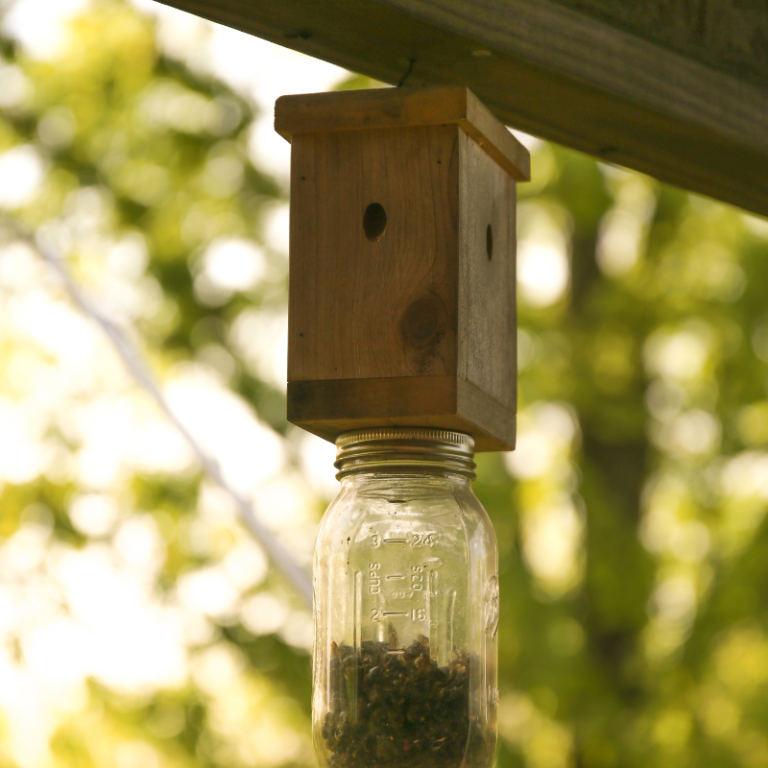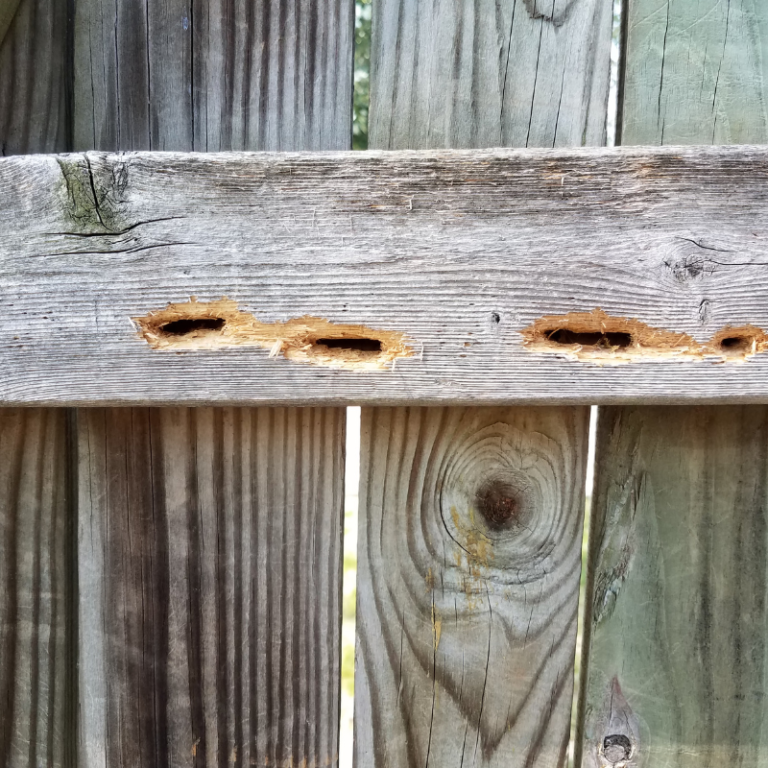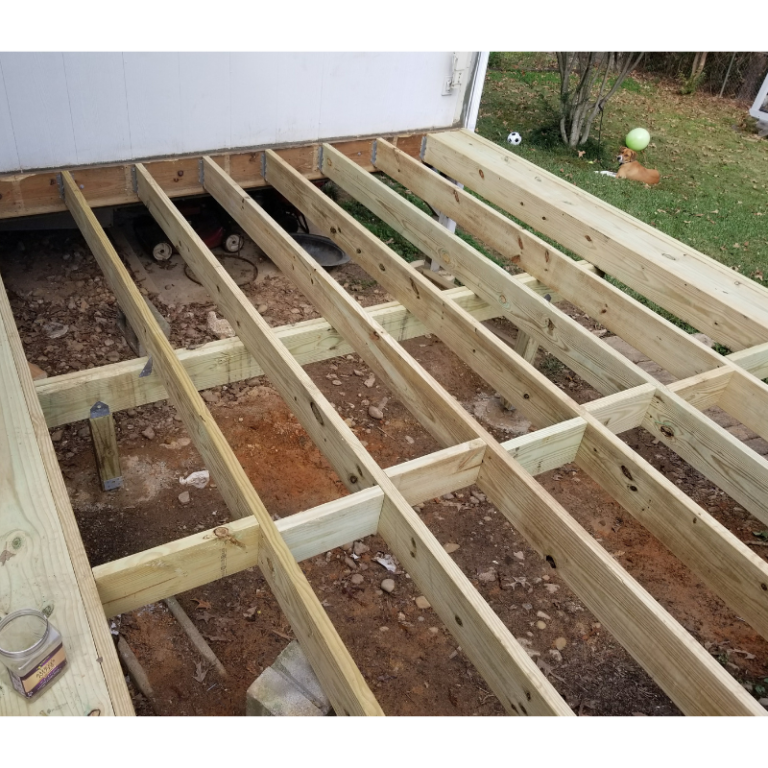Table of Contents
Carpenter bees may not be the usual suspects we deal with in the beekeeping world, but they’re important enough to talk about, especially if they’ve taken a liking to your wooden structures.
At Foxhound Bee Co, we deal solely with honey bees, but we are well aware of the other bees in our ecosystem. They all have their role, and carpenter bees are just as important.
While these solitary bees are essential pollinators for many plants, they can cause some real headaches for homeowners.
As beekeepers, we have to walk the line between what is best for the bees and the beekeepers. But also the public, which is why we have a dedicated bee removal page for connecting those who don’t want bees to those who do.
You see, carpenter bees have a knack for drilling holes into wood to create nests, and this can lead to structural damage over time. But before you consider swatting them away or worse, let’s look at some ways to manage carpenter bee infestations without resorting to lethal means. After all, they’re still important pollinators, and there are humane ways to address the issue. Those are the best options compared to killing them.
But every spring, we get messages about people who want to kill carpenter bees and have active carpenter bee nests in their homes they want to be removed. We don’t do that service, but we do do our best to help.
Identifying Carpenter Bees
First things first, let’s make sure we’re talking about carpenter bees and not some other insect. Carpenter bees are similar in size and shape to bumble bees, but there’s a key difference: carpenter bees have a shiny, almost hairless abdomen, whereas bumble bees have a fuzzy one. They range in color from black to dark blue and are usually about 1 inch in size.
I find it very easy to identify carpenter bees just from the back of them. Very large, shiny and smooth is how to identify a carpenter bee. This is how you identify a carpenter bee outside of the nest.
The nest of a carpenter bees is very different than many other bees. While honeybees build their nests in tree trunks and other cavities. Mason bees build their nest in small cracks, hollow reeds and other places. Carpenter bees always build their nests in wood.
One clear sign of a carpenter bee infestation is the presence of perfectly round holes about the diameter of a pinky on wooden surfaces. You’ll often find these holes on the sides of wooden beams, deck railings, or other wooden structures around your home or garden.
Another clue is the sawdust, also known as “frass,” that you might find below these holes. It’s the byproduct of their drilling activities and is basically sawdust.

Why Keep Them Alive?

Before you reach for that spray bottle filled with pesticides, consider the role of carpenter bees. These bees are actually important pollinators for many flowering plants.
You may not know this, but some plants can’t be pollinated by honeybees and require carpenter bees to do it. So the more carpenter bees we kill, the more these plants suffer.
Think about this: a world without pollinators like carpenter bees would be a world without much of the food we eat and the flowers we enjoy.
Even though they may cause some damage to wood structures, the benefits they provide to the ecosystem are substantial. So, instead of killing them, let’s look at ways to manage and relocate these helpful pollinators. Or better yet, prevent carpenter bees from even building in your space in the first place.
Read more about bees and their conservation from Butterfly Pavilion.
How Carpenter Bees Nest
Carpenter bees drill holes in the wood and build a nest there. But their colony is actually very small, a single female carpenter bee at times and then a few more during the spring and summer. They live in very small colonies, but the problem isn’t the number of bees; the problem is with the tunneling in the wood.
Once the carpenter bee drills the hole in the surface of the wood, it makes a quick turn along the face of the wood. You can see this part under the surface, but it is typically only a couple of inches.
In this little tunnel is where the queen lives and she keeps her carpenter bee larvae. This tunnel alone will not damage the structure enough to make it collapse.
But carpenter bee nests usually come in groups, and it’s common to see multiple carpenter bee holes in an area. Year after year, this can become an issue.
Even if you see lots of these holes, it doesn’t mean there are multiple entrances to the same nest. They are all independent of each other.

Do Carpenter Bees Sting?
A female carpenter bee, which is the only one that can burrow in the wood, is also the only that can sting. Male carpenter bees are the ones that often hang outside the entrance of the nest. These are the ones that typically “buzz” you when walking outside the nest. They are not able to sting; they are just there for show.
Carpenter Bees In The Winter?
The reason you don’t have an issue with these bees in the winter is that the queen is basically hibernating. The queen bee may be in the hole, or she could be somewhere else. All of the female carpenter bees and male bees die over the winter, leaving behind the queen by herself. This is why you don’t notice them in the winter.
Carpenter Bee Damage and Wood Peckers
It’s not common for a group of carpenter bees to damage a structure so much that it collapses. However, the presence of the nest can lead to further damage. It is a way that water can seep into the wood and possibly cause early rot. It may not look good with all the holes in the wood.
The worst option, which I have seen, is where wood peckers come and find the nest and further damage the wood. The tunnel the bees create is just under the surface, and woodpeckers can easily peck through this surface and cause further damage.
How to Remove Carpenter Bees Humanely
It is possible to relocate carpenter bees, but this isn’t something that a beekeeper can do, and it is mostly impractical. If you would like to try and do this, here are some tips and tricks if you don’t want to kill carpenter bees.
Essential Oils
Believe it or not, essential oils can be used when dealing with carpenter bees. Almond oil and citrus sprays, for example, are effective in deterring carpenter bees. Simply fill a spray bottle with the essential oil diluted in water and spray it in and around the carpenter bee holes. The scent will drive the bees away without harming them. You do have to reapply as needed as it will not stay around for long.
Carpenter bees, just like all bees are very sensitive to their environment. So introducing essential oils to their area may deter them from continuing to live there. This isn’t foolproof, but it is one way to an active carpenter bee nest.
There are products made for beekeepers to remove bees from honey boxes, but these are not designed for carpenter bees. But many of them are made with essential oils.
Bee Traps
Another humane method is to use carpenter bee traps. These traps lure in the carpenter bees but make it difficult for them to escape, allowing you to relocate them. Place the traps near the carpenter bee holes or any other place where you’ve spotted carpenter bee activity. In theory, you could trap the bees in these traps and move them to another location, but it isn’t practical. It is an option, but not a great one.
A carpenter bee trap is typically used for trapping and killing these bees. More on that below if you want to use this as a way to get rid of carpenter bees.
Sealing Holes
Once you’re sure all the bees have been removed or have left the area, you can proceed to fill the carpenter bee holes with wood putty. There are actually little plugs for carpenter bee holes made for the sole purpose of closing the hole.
If you do seal the hole with a carpenter bee inside, it will tunnel out through the other side. So if plugging the holes, make sure the bee is not inside. In addition to wood putty and the plugs, the holes can also be filled with caulking compounds as well.
How to Rid Yourself of Carpenter Bees With Chemicals
Insecticidal Sprays
Aerosol sprays specifically formulated for bees can be applied directly into the holes where carpenter bees are nesting. These sprays often provide quick knockdown and kill-on contact. These are the same sprays that you use for wasps and hornets, but you want to use one that has a stem on it so you can get it into the tunnel.
The foaming spray, like the ones used for yellow jackets, is a good option. This carpenter bee spray is advertised as natural and foaming, so that would be a good option as well.
Insecticidal Dust
Dusts like diatomaceous earth can be applied to the nesting holes using a duster. The dust sticks to the bee’s body and eventually kills it through dehydration. Diatomaceous earth is a more natural product, but applying it into the hole can be difficult without using a duster.
Another option besides diatomaceous earth is boric acid which is similar and will kill on contact. There are many insecticides that come in dust form that can be dusted into the hole under the wood surface. After using this option or the sprays inside the nest, the opening can be closed with a cork, caulk, or wood puddy.
Liquid Insecticides
Certain liquid insecticides can be applied to wood surfaces where carpenter bees are drilling holes. The bees come into contact with the insecticide when they land on the treated surface.
Of these options, this is our least favorite. In general, spreading a poison over the surface of the wood will not only kill the carpenter bees, but it could kill other insects that come in contact with it. This technique doesn’t deal with the individual nests; it’s just a broad spray applied over the wood. And even then, it must be reapplied as it will wear off with time.
I have seen pest control companies advertise this as an option, but it is not a great option (unless you are a pest control company). It’s expensive, puts unnecessary chemicals in the environment, kills other insects, and doesn’t do the job well.
How To Prevent and Deter Carpenter Bees

If you have carpenter bee problems, they will more than likely continue year after year. Even when getting rid of this year’s carpenter bees, next year, there will be more.
So it is best to have a prevention strategy instead of a reaction strategy every year. The good thing is the preventative tricks don’t use chemicals and work well.
Pressure Treated Wood and Painted Wood
Unfortunately, pressure-treated wood does not prevent carpenter bees from creating nests and chewing the wood. The pressure treated surface makes no difference to the bees, and they will burrow right into it. Pressure treatment is more for rot from moisture than it is for insects.
But what you can do is paint or stain the wood. A painted surface is not desirable to carpenter bees, and they will rarely burrow through a painted surface. A stained surface can be good too, but it is not as good at getting rid of carpenter bees as a painted surface is.
Over time, a painted or stained surface in poor condition is susceptible to carpenter bee holes, so you will want to maintain it. This is the #1 best step you can make at preventing carpenter bee holes. The number of nests will be reduced so much that it will be much easier to plug carpenter bee holes when they do appear.
Just make sure to plug the existing carpenter bee holes and remove active nests before painting.
Carpenter Bee Traps
We have had very good luck with the use of a carpenter bee trap over the years. These are great tools to use to prevent the population of carpenter bees from getting too high.
They are very simple to use and do not use any chemicals. They are designed to be appealing to the bees looking for a hole to burrow into. They come in many shapes, but they are typically boxy wooden structures with a jar underneath them.
Angled holes in the sides of the box is where the bees will go into and then down into the jar. The angled holes make it difficult for the bee to escape.
There are all types of things you can add to the trap to make the work better, but we have not found those necessary. There are carpenter bee lures that can be added if you want to try your luck.
These traps simply hang or mount to an area where the bees will collect, and it can be left there all year long. Because the queen is the only bee to survive the winter, these traps work best when they are in place in late winter and early spring. Trapping the queens will go a long way in preventing a larger population of bees from nesting in the area.




